Grow Chayote at Home and unlock a world of culinary possibilities right in your backyard! Have you ever dreamt of harvesting your own exotic vegetables, impressing your friends with unique dishes, and knowing exactly where your food comes from? Well, dream no more! This DIY guide is your passport to cultivating the versatile and delicious chayote squash, also known as mirliton or vegetable pear.
Chayote, originating from Mesoamerica, has been a staple in indigenous diets for centuries. Its cultivation spread throughout the world, becoming a beloved ingredient in cuisines from Latin America to Southeast Asia. Beyond its rich history, chayote is incredibly easy to grow, making it perfect for beginner gardeners and seasoned pros alike.
Why should you learn to grow chayote at home? Because it’s a nutritional powerhouse packed with vitamins, minerals, and fiber! Plus, every part of the plant is edible – the fruit, seeds, leaves, and even the root. Imagine the satisfaction of creating delicious meals using ingredients you’ve nurtured from seed to table. In this article, I’ll share my favorite tips and tricks for successfully growing chayote, ensuring a bountiful harvest and a rewarding gardening experience. Let’s get started!
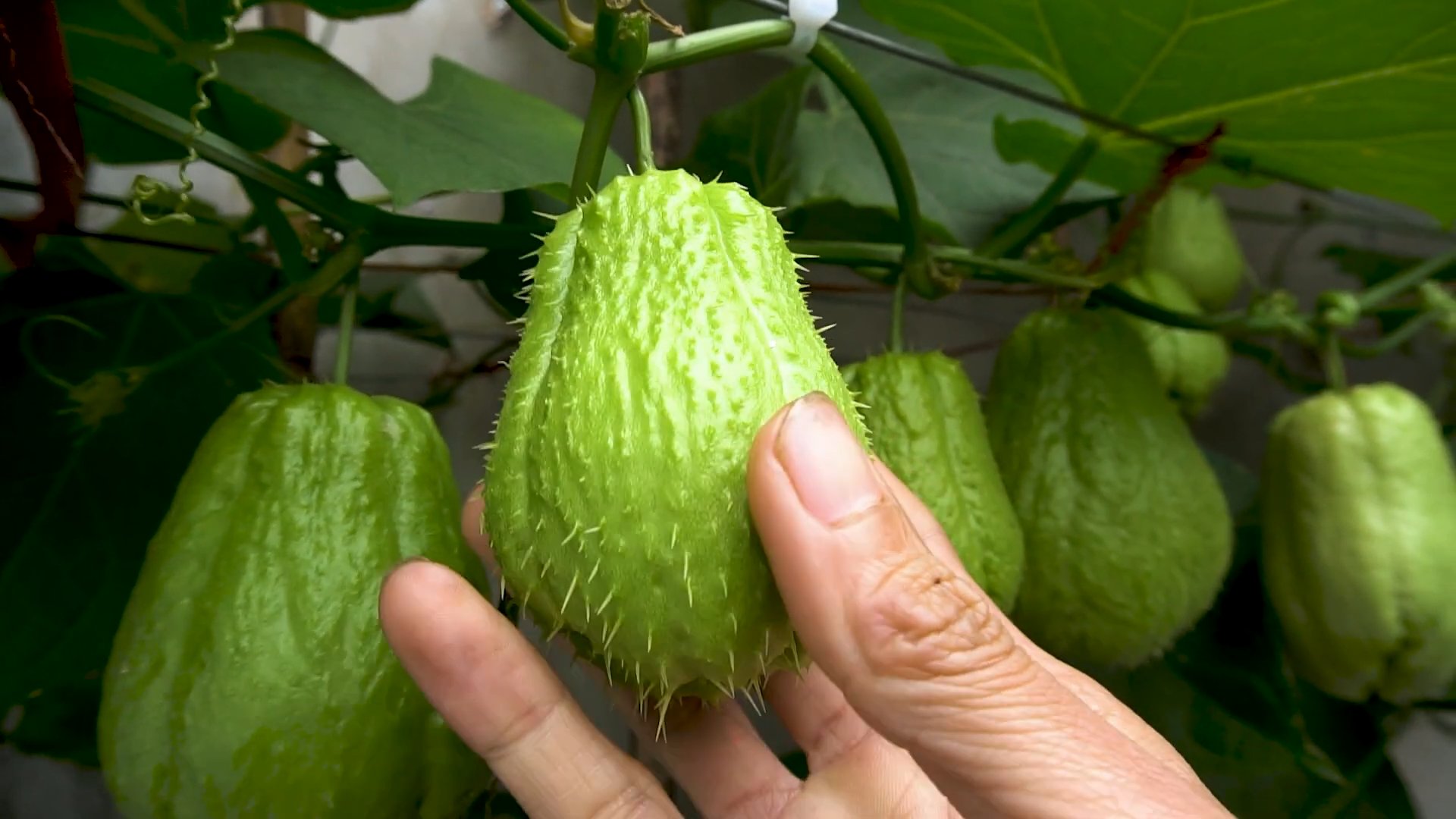
Growing Chayote Squash: A Beginner’s Guide to Bountiful Harvests
Hey there, fellow gardening enthusiasts! Ever heard of chayote squash? It’s this amazing, pear-shaped veggie that’s super versatile in the kitchen and surprisingly easy to grow at home. I’m going to walk you through everything you need to know to cultivate your own chayote vine and enjoy a delicious harvest. Trust me, it’s a rewarding experience!
What is Chayote Squash?
Before we dive in, let’s get acquainted with our star vegetable. Chayote (Sechium edule), also known as mirliton, vegetable pear, or choko, is a member of the gourd family. It’s native to Central America and Mexico, but it thrives in warm climates around the world. The entire plant is edible – the fruit, seeds, leaves, shoots, and even the root tubers! The fruit itself has a mild, slightly sweet flavor, making it a great addition to stir-fries, soups, salads, and more.
Why Grow Chayote?
* Easy to Grow: Chayote is relatively low-maintenance and can be grown even by beginner gardeners.
* Prolific Producer: A single chayote plant can produce a large number of fruits, providing you with a generous harvest.
* Versatile in the Kitchen: Chayote can be used in a variety of dishes, both savory and sweet.
* Nutritious: Chayote is a good source of vitamins, minerals, and fiber.
* Ornamental Value: The chayote vine can be trained to grow on trellises or fences, adding beauty to your garden.
Getting Started: Choosing Your Chayote
The most unique thing about growing chayote is that you don’t start with seeds! You plant the whole fruit. Yep, you read that right.
* Finding a Chayote: Look for a mature chayote fruit at your local grocery store or farmers market. Choose one that is firm, unblemished, and starting to sprout. You’ll notice small roots or a tiny vine emerging from the bottom (the stem end) of the fruit. This is a good sign!
* Variety Selection: There are different varieties of chayote, ranging in color from light green to dark green. The taste is generally the same, so choose based on availability and personal preference.
* Preparing the Chayote for Planting: You can either plant the chayote directly in the ground or pre-sprout it indoors. I prefer pre-sprouting because it gives the plant a head start and increases the chances of success.
Pre-Sprouting Your Chayote (Recommended)
This step is optional, but I highly recommend it, especially if you live in an area with a shorter growing season.
1. Wrap the Chayote: Gently wrap the chayote fruit in a damp paper towel. Make sure the paper towel is moist but not soaking wet.
2. Place in a Bag: Put the wrapped chayote in a plastic bag or container. This will help retain moisture and create a humid environment.
3. Find a Warm Spot: Store the bag in a warm, dark place, such as a kitchen cabinet or pantry.
4. Check Regularly: Check the chayote every few days to ensure the paper towel remains moist. If it’s drying out, lightly mist it with water.
5. Wait for Sprouting: Within a few weeks, you should see a strong vine emerging from the chayote. The roots will also become more prominent. Once the vine is several inches long and the roots are well-developed, it’s time to plant!
Planting Your Chayote
Now for the fun part – getting your chayote into the ground!
1. Choosing the Right Location: Chayote vines need plenty of sunlight (at least 6-8 hours per day) and well-drained soil. They also need a strong support structure, such as a trellis, fence, or arbor, as the vines can grow quite large and heavy.
2. Preparing the Soil: Dig a hole that is about twice the size of the chayote fruit. Amend the soil with compost or well-rotted manure to improve drainage and fertility. Chayote plants are heavy feeders, so rich soil is essential.
3. Planting the Chayote: Carefully place the chayote fruit in the hole, with the sprouted end (the vine and roots) facing upwards. Cover the fruit with soil, leaving the top of the fruit slightly exposed.
4. Watering: Water the newly planted chayote thoroughly. Keep the soil consistently moist, but not waterlogged.
5. Mulching: Apply a layer of mulch around the base of the plant to help retain moisture, suppress weeds, and regulate soil temperature.
Providing Support
Chayote vines are vigorous climbers and need a sturdy support structure to thrive.
1. Choosing a Support: A trellis, fence, arbor, or even a strong pergola can be used to support your chayote vine. Make sure the support is strong enough to handle the weight of the mature vine and its fruits.
2. Training the Vine: As the vine grows, gently guide it onto the support structure. You may need to tie the vine to the support in a few places to help it get started.
3. Pruning: Pruning is not essential, but it can help to control the size of the vine and improve air circulation. Remove any dead or damaged vines, and trim back excessive growth as needed.
Caring for Your Chayote Plant
Once your chayote plant is established, it’s relatively easy to care for.
1. Watering: Water regularly, especially during dry periods. Chayote plants need consistent moisture to produce a good harvest.
2. Fertilizing: Fertilize your chayote plant every few weeks with a balanced fertilizer. You can also use compost tea or other organic fertilizers.
3. Pest and Disease Control: Chayote plants are generally resistant to pests and diseases. However, keep an eye out for common garden pests such as aphids, squash bugs, and spider mites. If you notice any problems, treat them promptly with an appropriate insecticide or fungicide. I prefer using organic options whenever possible.
4. Pollination: Chayote plants produce both male and female flowers on the same vine. Pollination is usually done by insects, but you can also hand-pollinate the flowers if needed. To hand-pollinate, use a small brush to transfer pollen from the male flowers to the female flowers.
Harvesting Your Chayote
The moment you’ve been waiting for!
1. When to Harvest: Chayote fruits are typically ready to harvest in the fall, about 30-40 days after flowering. The fruits should be firm and smooth, with a light green color.
2. How to Harvest: Use a sharp knife or pruning shears to cut the fruit from the vine. Leave a short stem attached to the fruit.
3. Storing Chayote: Chayote fruits can be stored in the refrigerator for several weeks.
Troubleshooting
Even with the best care, you might encounter a few challenges. Here are some common issues and how to address them:
* No Fruit Production: This could be due to a lack of pollination, insufficient sunlight, or poor soil fertility. Make sure your plant is getting enough sunlight, fertilize regularly, and consider hand-pollinating the flowers.
* Yellowing Leaves: Yellowing leaves can be a sign of overwatering, underwatering, or nutrient deficiency. Adjust your watering schedule and fertilize as needed.
* Pest Infestation: Inspect your plant regularly for pests and treat them promptly with an appropriate insecticide.
Enjoying Your Harvest
Now that you’ve harvested your chayote squash, it’s time to get creative in the kitchen! Here are a few ideas:
* Stir-fries: Chayote adds a mild, slightly sweet flavor to stir-fries.
* Soups and Stews: Chayote can be used as a substitute for potatoes or other vegetables in soups and stews.
* Salads: Grated or thinly sliced chayote can be added to salads for a refreshing crunch.
* Pickles: Chayote can be pickled for a tangy and flavorful condiment.
* Desserts: Believe it or not, chayote can even be used in desserts! It can be grated and added to cakes, muffins, or pies.
Saving Seeds (Technically, the Fruit!)
Remember, you don’t save seeds in the traditional sense. You save the whole fruit! To ensure you have chayote to plant next year, simply store a few mature fruits in a cool, dry place over the winter. In the spring, you can pre-sprout them and plant them as described above.
Final Thoughts
Growing chayote squash is a fun and rewarding experience. With a little bit
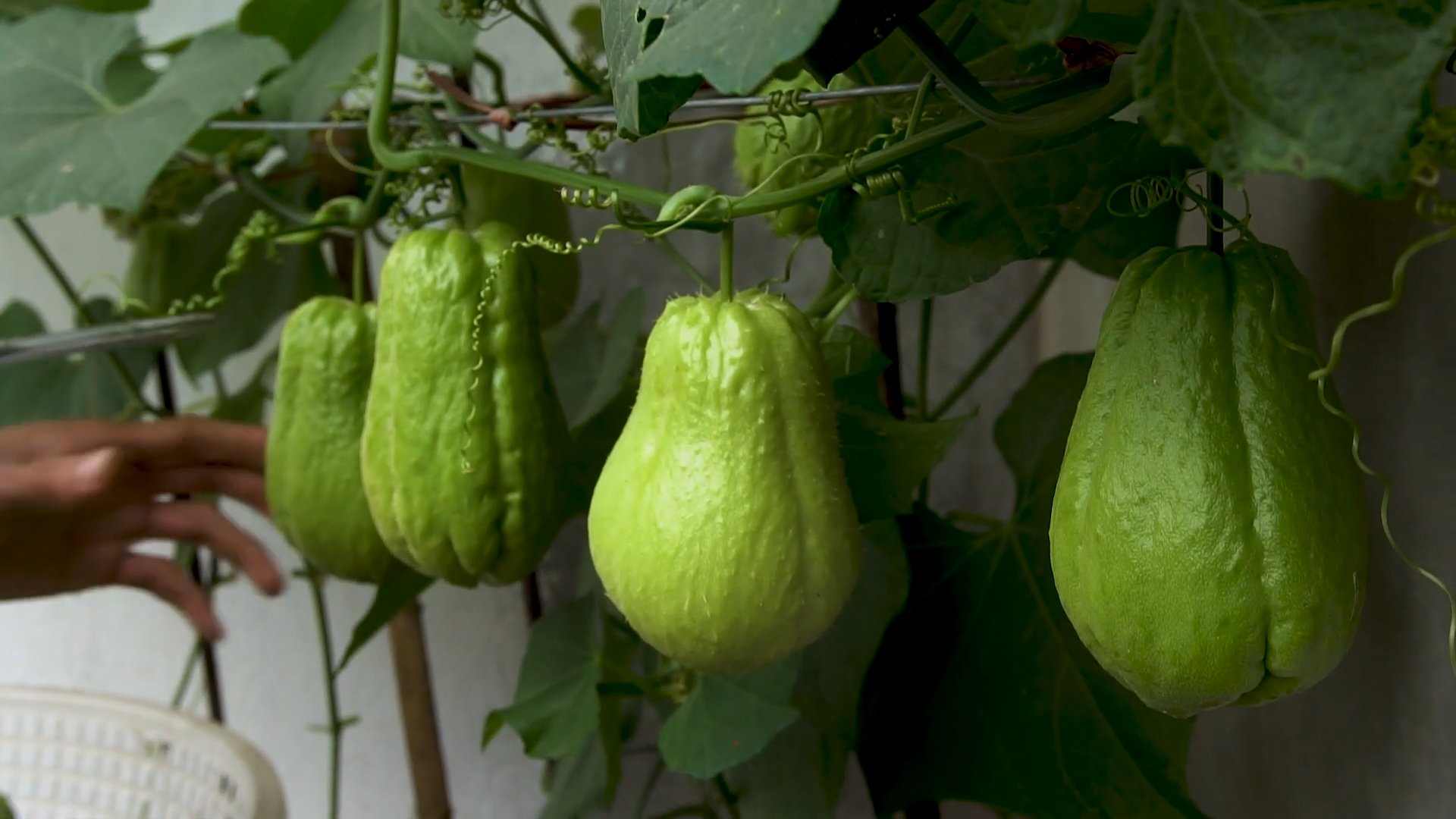
Conclusion
So, there you have it! Growing chayote at home is not only achievable, but it’s also a rewarding experience that brings fresh, homegrown produce right to your kitchen. We’ve walked you through the process, from sprouting the seed to nurturing the vine, and hopefully, you’re now feeling confident and ready to embark on your own chayote-growing adventure.
Why is this DIY trick a must-try? Because it offers a unique opportunity to connect with your food source, reduce your reliance on store-bought vegetables, and enjoy the unparalleled flavor of freshly harvested chayote. Imagine the satisfaction of serving a meal featuring chayote you nurtured from a single fruit! Plus, chayote is incredibly versatile in the kitchen. You can use it in stir-fries, soups, salads, or even pickle it for a tangy treat.
But the benefits extend beyond the culinary realm. Growing chayote is also an environmentally friendly choice. You’re reducing your carbon footprint by minimizing transportation and supporting sustainable practices. And let’s not forget the sheer joy of watching a plant thrive under your care. It’s a therapeutic and fulfilling hobby that can bring a sense of peace and accomplishment to your life.
Looking for variations? Consider growing chayote in different ways. If you have limited space, you can train the vine to grow vertically on a trellis or fence. This not only saves space but also creates a beautiful green wall. You can also experiment with different varieties of chayote, each with its own unique flavor and texture. Some varieties are smoother, while others are more ribbed. Some are lighter in color, while others are darker green.
Another variation is to focus on companion planting. Chayote thrives when planted alongside certain other vegetables and herbs. Consider planting beans or peas nearby to help fix nitrogen in the soil, or add marigolds to deter pests. Experiment with different combinations to see what works best in your garden.
Don’t be afraid to experiment with different growing techniques as well. Some gardeners prefer to start their chayote indoors, while others plant it directly in the ground. Some use organic fertilizers, while others opt for synthetic ones. The key is to find what works best for you and your growing conditions.
We strongly encourage you to give this DIY trick a try. It’s a relatively easy and inexpensive way to add a unique and delicious vegetable to your diet. And who knows, you might just discover a new passion for gardening!
Once you’ve harvested your first chayote, we’d love to hear about your experience. Share your photos, tips, and recipes with us in the comments section below. Let’s create a community of chayote growers and learn from each other. Your insights could inspire others to take the plunge and start their own chayote-growing journey. Remember, every successful garden starts with a single seed. So, what are you waiting for? Get planting and enjoy the fruits (or rather, vegetables) of your labor! Mastering the art of growing chayote at home is easier than you think!
Frequently Asked Questions (FAQ)
What exactly is chayote, and what does it taste like?
Chayote (Sechium edule) is a type of squash that belongs to the gourd family. It’s native to Mexico and Central America, but it’s now grown in many parts of the world. The fruit is typically pear-shaped and has a mild, slightly sweet flavor. Some people describe it as a cross between a cucumber and an apple. The texture is crisp and slightly crunchy when raw, but it becomes tender and slightly starchy when cooked. The entire fruit, including the seed, is edible. The taste can vary depending on the variety and how it’s prepared, but generally, it’s a very versatile vegetable that can be used in a wide range of dishes.
How long does it take for a chayote plant to produce fruit?
The time it takes for a chayote plant to produce fruit can vary depending on several factors, including the climate, growing conditions, and the specific variety. Generally, you can expect to harvest your first chayote fruits within 4-6 months of planting. However, it’s important to note that chayote plants typically produce fruit in the fall, so if you plant in the spring, you may have to wait until the following fall to see a significant harvest. Be patient and continue to provide the plant with proper care, and you’ll eventually be rewarded with a bountiful crop of chayote.
Is chayote a perennial or an annual plant?
Chayote is technically a perennial plant in warmer climates (USDA zones 8-10). This means that if the winter temperatures don’t drop too low, the plant can survive and continue to produce fruit for several years. However, in colder climates, chayote is typically grown as an annual. The frost will kill the vine, but you can save the fruit and sprout it again the following spring. Even in warmer climates, it’s a good idea to protect the plant from frost during the winter months to ensure its survival.
What are the best growing conditions for chayote?
Chayote plants thrive in warm, sunny locations with well-drained soil. They need at least 6-8 hours of sunlight per day to produce a good crop of fruit. The soil should be rich in organic matter and have a pH between 6.0 and 7.0. It’s also important to provide the plant with a strong trellis or fence to climb on, as the vines can grow quite long and heavy. Regular watering is essential, especially during dry periods. However, avoid overwatering, as this can lead to root rot. Fertilize the plant regularly with a balanced fertilizer to promote healthy growth and fruit production.
How do I know when a chayote fruit is ripe?
A ripe chayote fruit will be firm to the touch and have a smooth, unblemished skin. The color will vary depending on the variety, but it should be a consistent shade of green or light green. The fruit should also feel heavy for its size. You can gently press on the fruit to check for firmness. If it feels soft or mushy, it’s likely overripe. It’s best to harvest chayote fruits when they are still relatively young and tender, as they can become tough and fibrous as they mature.
Can I eat the seed of the chayote?
Yes, the seed of the chayote is perfectly edible and often considered a delicacy. It has a slightly nutty flavor and a creamy texture. You can eat it raw, cooked, or roasted. Some people like to add it to salads, stir-fries, or soups. The seed is also a good source of nutrients, including protein, fiber, and vitamins. Just be sure to remove the tough outer skin before eating the seed.
What are some common pests and diseases that affect chayote plants?
Chayote plants are generally quite resistant to pests and diseases, but they can be susceptible to certain problems. Some common pests include aphids, spider mites, and squash bugs. These pests can be controlled with insecticidal soap or neem oil. Diseases that can affect chayote plants include powdery mildew and root rot. Powdery mildew can be prevented by ensuring good air circulation around the plant. Root rot can be prevented by avoiding overwatering and ensuring that the soil is well-drained. Regularly inspect your plants for any signs of pests or diseases and take action promptly to prevent them from spreading.
How do I store chayote fruits after harvesting?
Chayote fruits can be stored in the refrigerator for several weeks. To store them properly, wrap them individually in plastic wrap or place them in a plastic bag. This will help to prevent them from drying out. You can also store chayote fruits in a cool, dark place, such as a root cellar. However, they will not last as long in this type of storage. Avoid storing chayote fruits near ethylene-producing fruits, such as apples and bananas, as this can cause them to ripen too quickly.


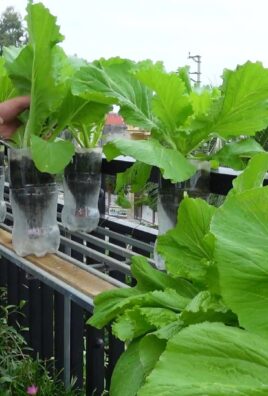
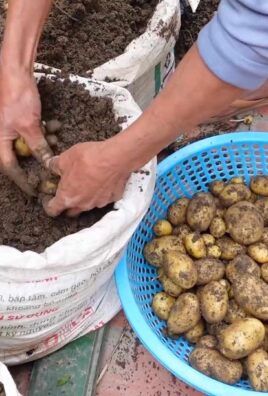
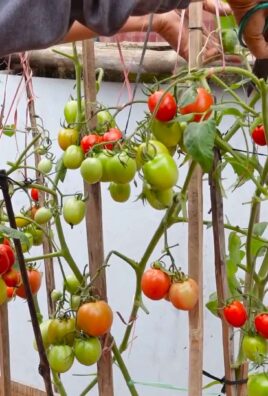
Leave a Comment